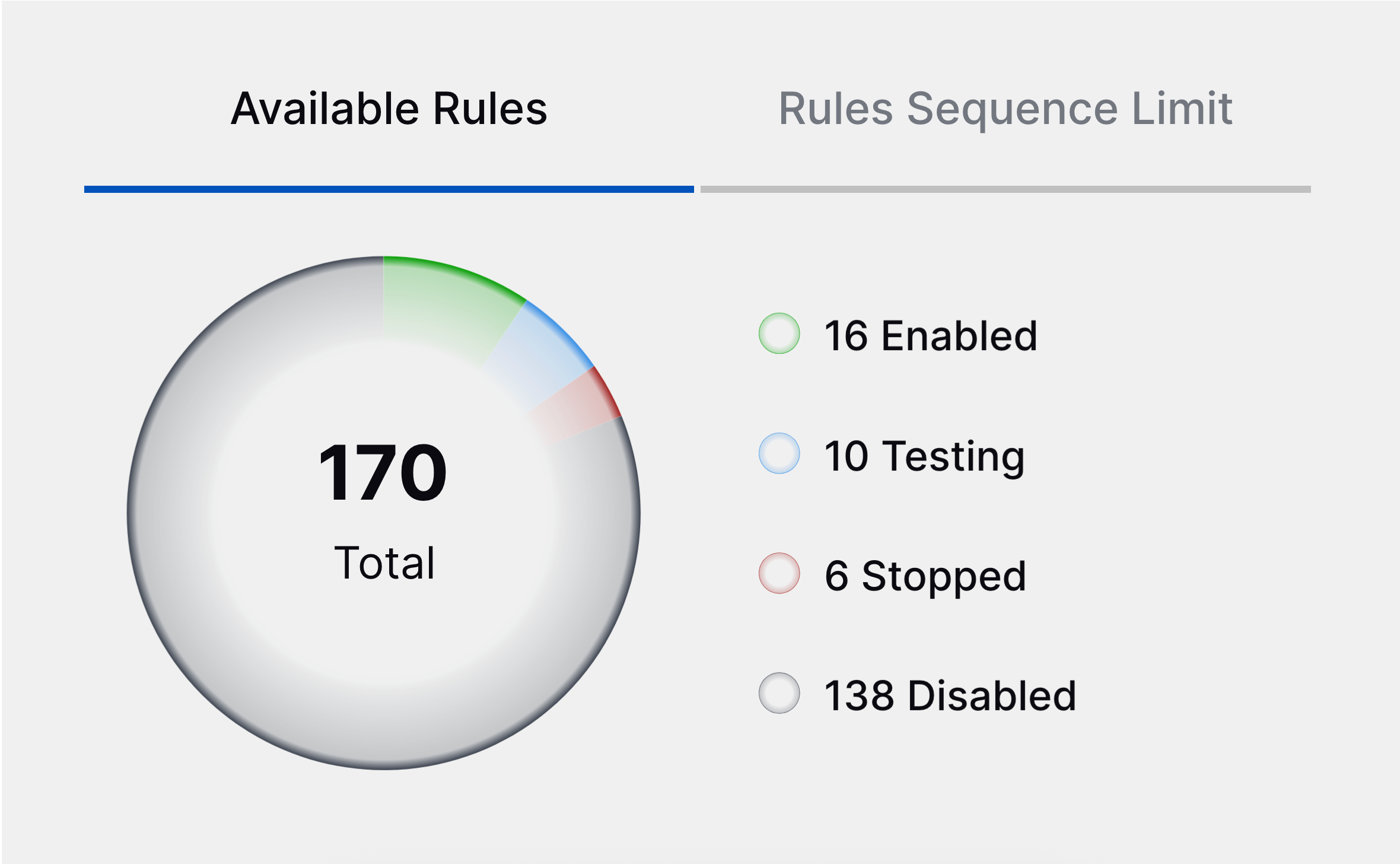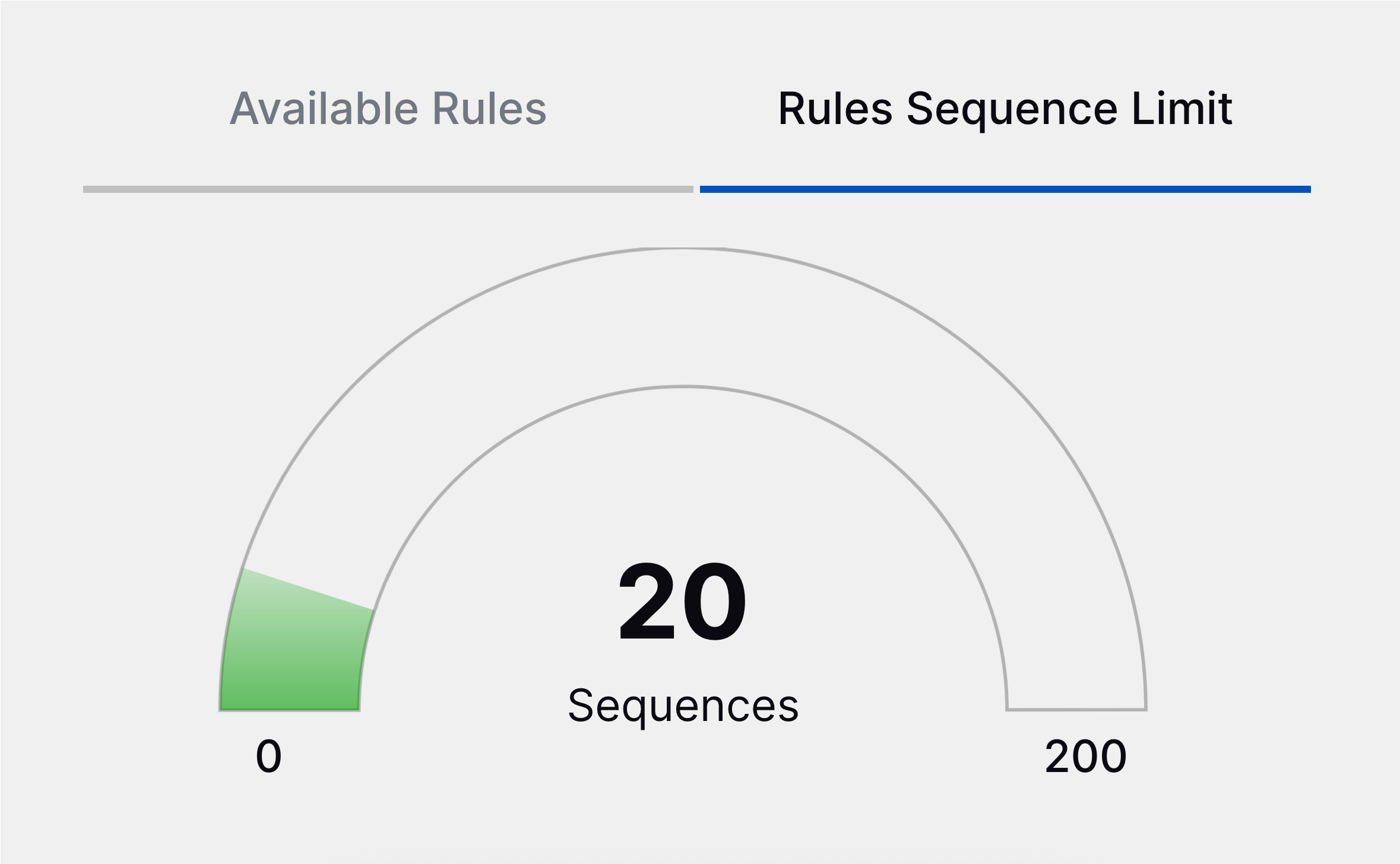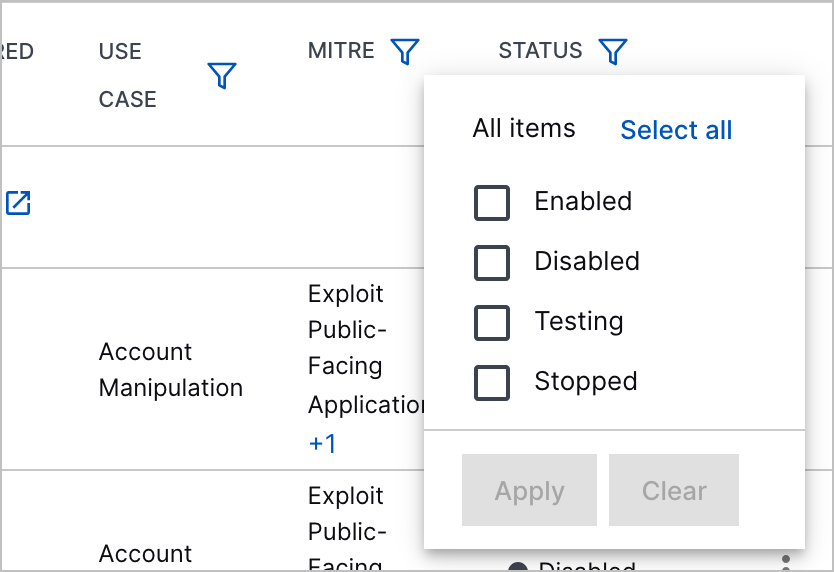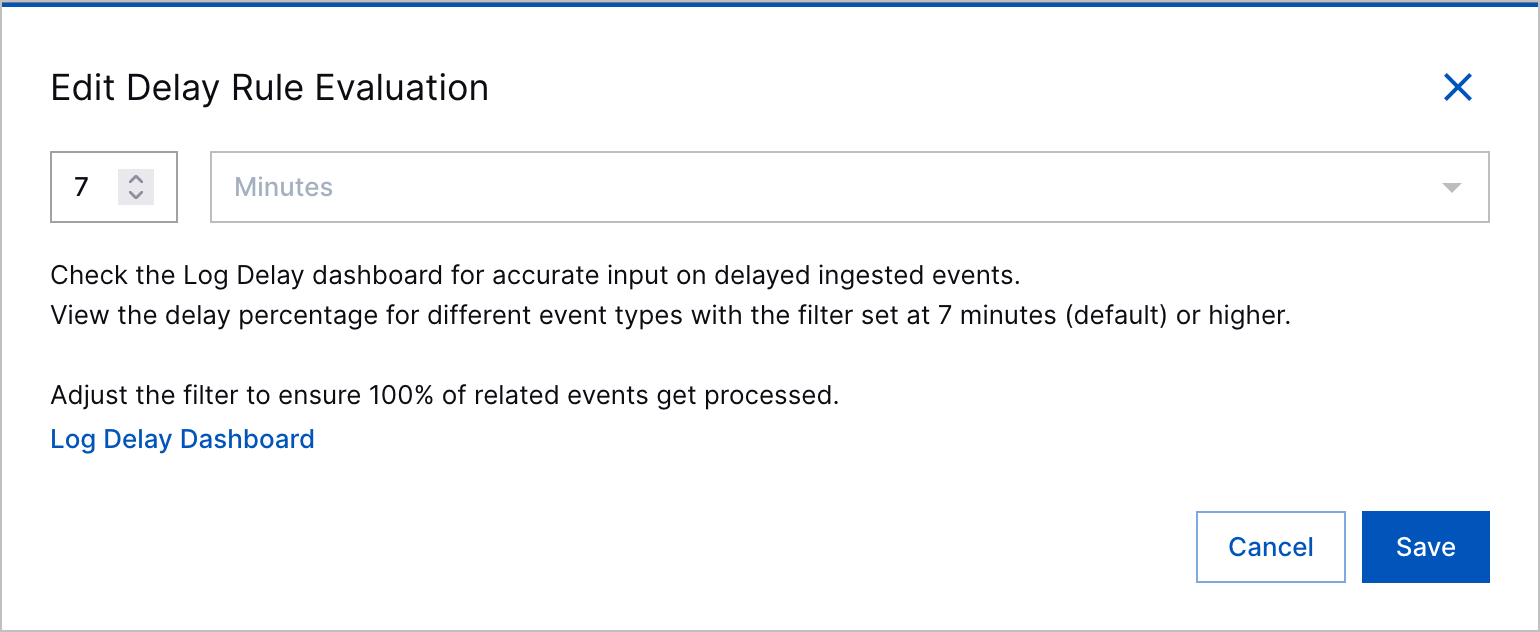Correlation Rules Features Introduced in 2025
June 2025
The following features were introduced in Correlation Rules in June 2025:
|
Feature |
Description |
|---|---|
|
New and Updated Correlation Rule Templates |
You can now better identify insider threats with new and updated correlation templates. New correlation rule templates include:
Updated correlation rule templates include:
|
May 2025
The following features were introduced in Correlation Rules in May 2025:
Feature | Description |
|---|---|
Correlation Rules Insights | To make informed decisions about authoring and tuning rules, you can now view insights about your correlation rules directly in Correlation Rules, including:
|
April 2025
This release does not include new features for Correlation Rules.
March 2025
This release does not include new features for Correlation Rules.
February 2025
The following features were introduced in Correlation Rules in February 2025:
Feature | Description | |
|---|---|---|
Stopped and Testing Statuses | You can now better understand the state of a correlation rule with two new statuses: Stopped and Testing. The Stopped status indicates that the rule has triggered more than 50 times in five minutes and has automatically been disabled. The Testing status indicates that the rule is enabled in test mode and its outcomes are suppressed.  You can also filter correlation rules by the new statuses.
| |
Select Outcomes Enhancements | When you create or edit a correlation rule, the step to Select Outcomes now clearly explains what happens when a rule triggers and the possible outcomes:
| |
Correlation Rule Details Severity Enhancement | When you view correlation rule details, you can now more quickly identify the rule severity: 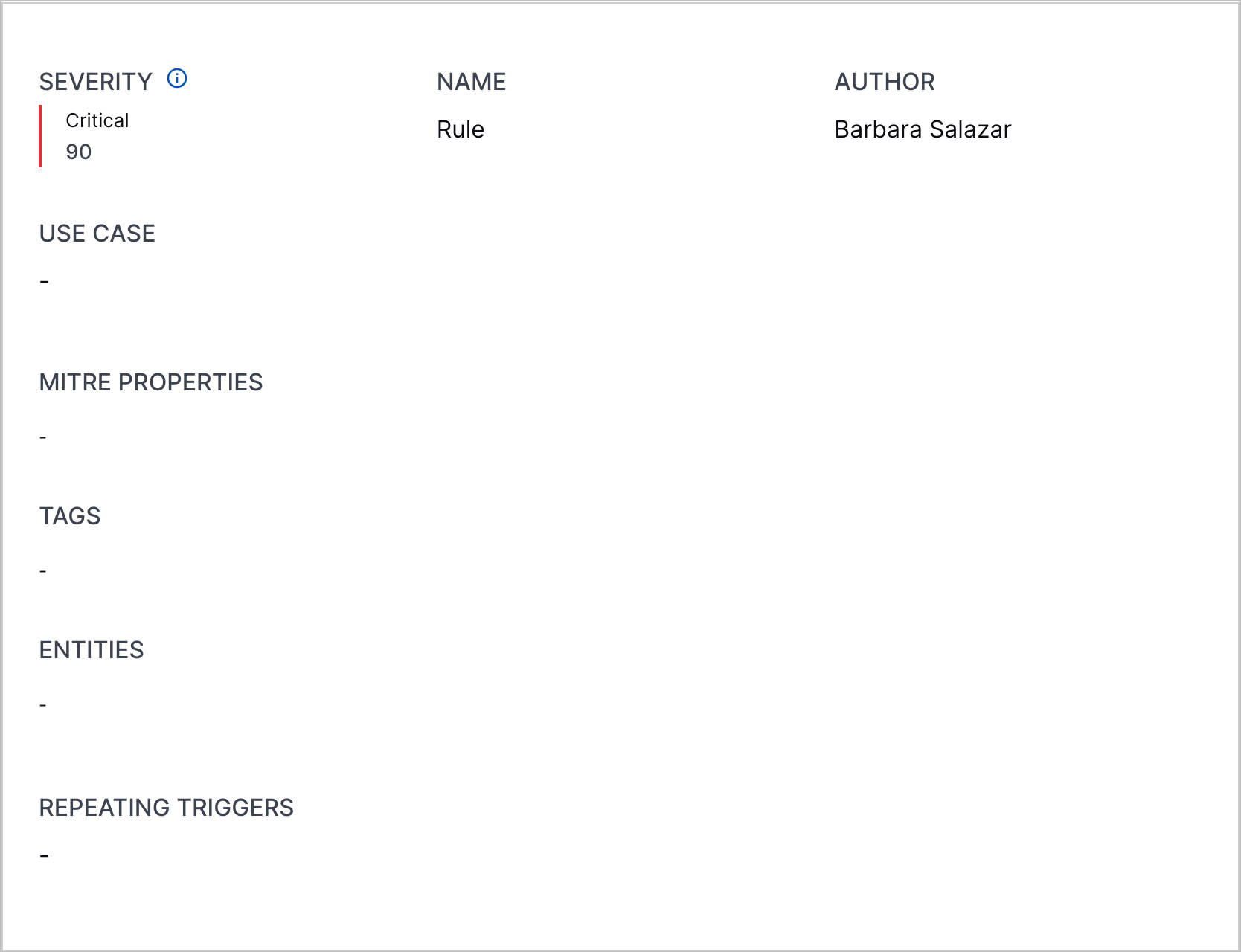
| |
Rule Evaluation Delay Explanation | When you create or edit a correlation rule, the step to configure a rule evaluation delay now clearly explains what rule evaluation delay is and that rules are delayed from evaluating events for seven minutes by default. 
| |
Rule Description Enhancements | You can now add more information to a correlation rule with descriptions. When you create or edit a correlation rule, you can now add a description about the rule. 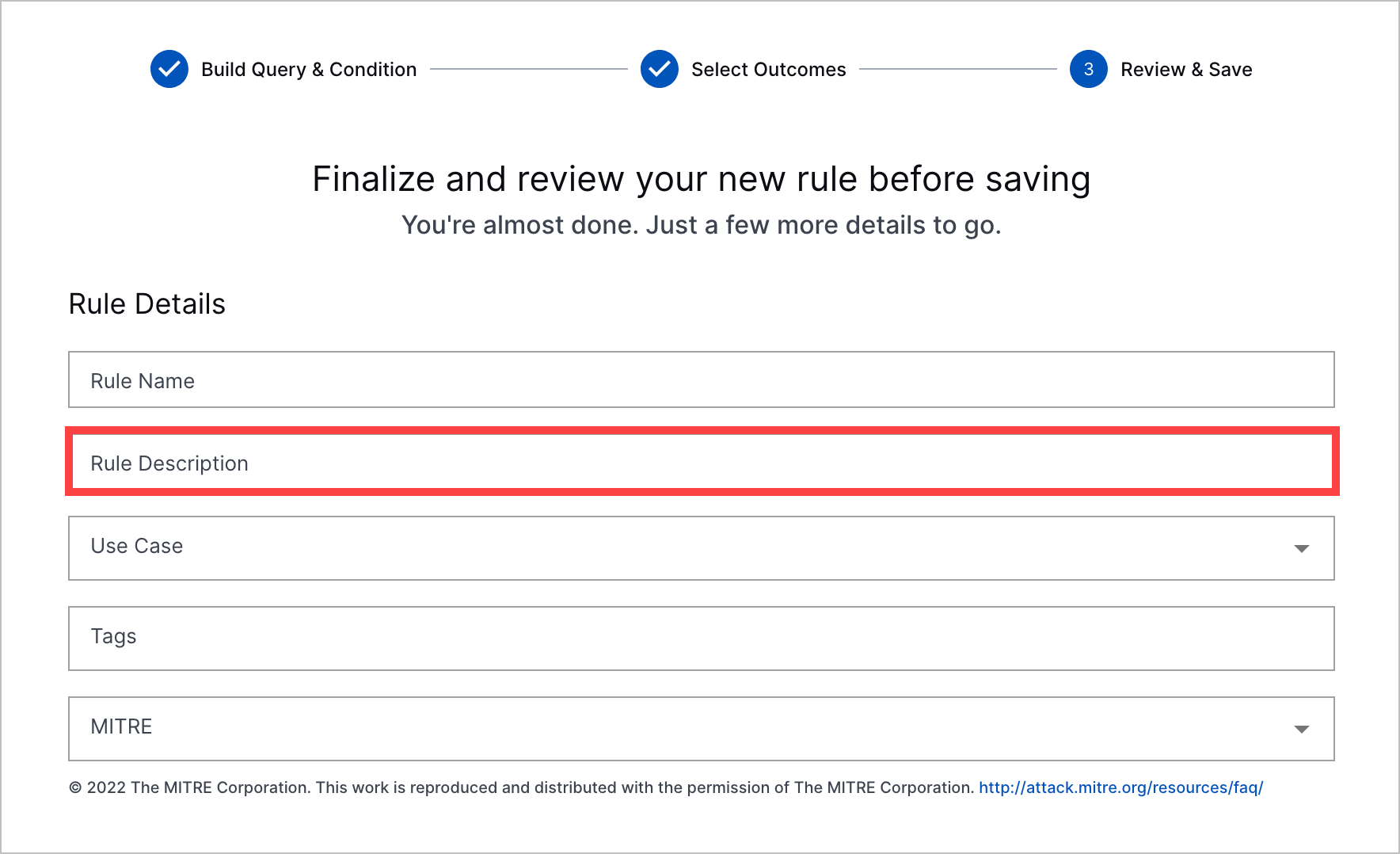 This description appears in the list of correlation rules and rule details.   If you use a correlation rule template, the correlation rule template description is automatically reused as the description of your new correlation rule. | |
Triggered Value to Search Navigation | To view all events related to a correlation rule, you can now navigate to Search using a link next to the number times a rule has been triggered. The query automatically entered in Search is rules.rule: "<rule name>". The link appears in the list of correlation rules:  The link also appears when you view the correlation rule details:  | |
Email Notification Address Change | Email notifications sent as an outcome are now sent from [email protected]. To ensure any rules for filtering emails or creating third-party tickets work properly, ensure they use the new email address. | |
New Region Support for the UK | Support for Correlation Rules now extends to the UK region. You can now access and use Correlation Rules in the UK. |
January 2025
The following features were introduced in Correlation Rules in January 2025:
Feature | Description |
|---|---|
Threat Center Outcomes Exclusions for Test Mode | To ensure you investigate and triage only real threats in Threat Center, correlation rules in test mode no longer create Threat Center cases or alerts. Events created from a triggered correlation rules in test mode have the activity type |
